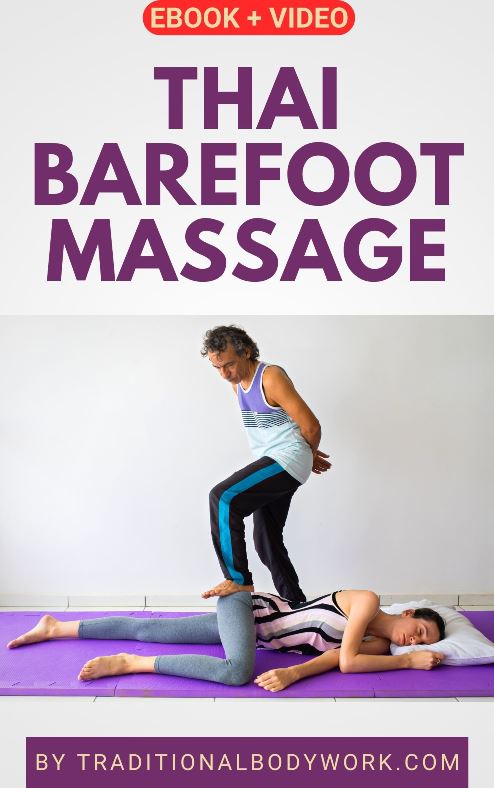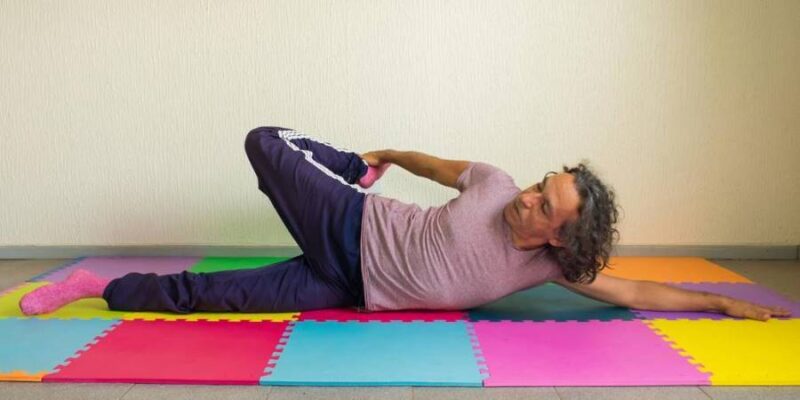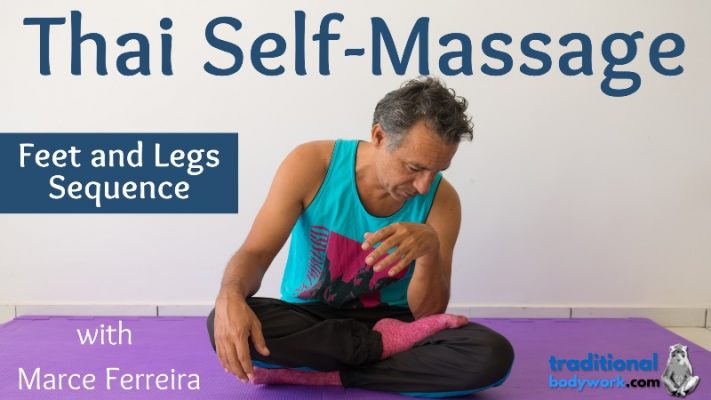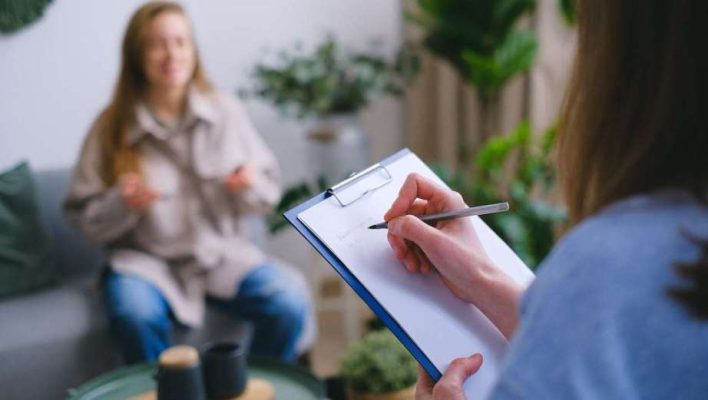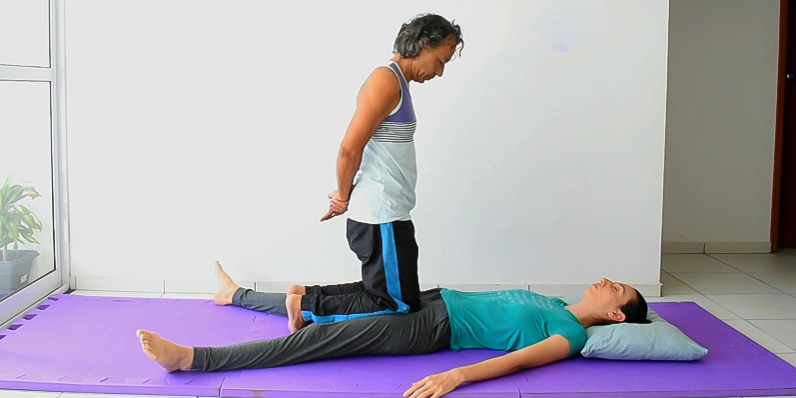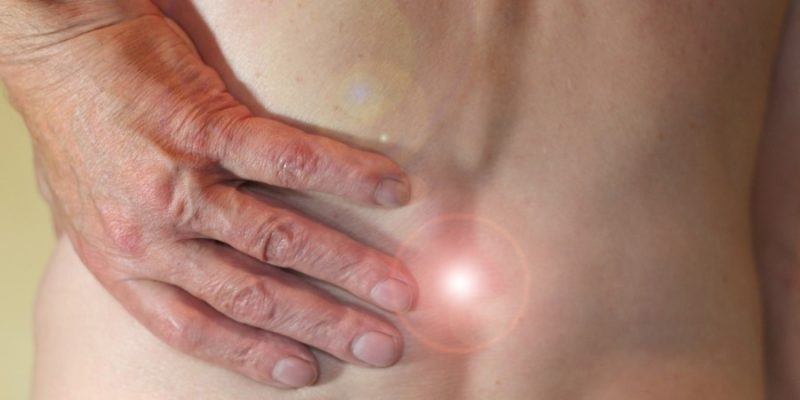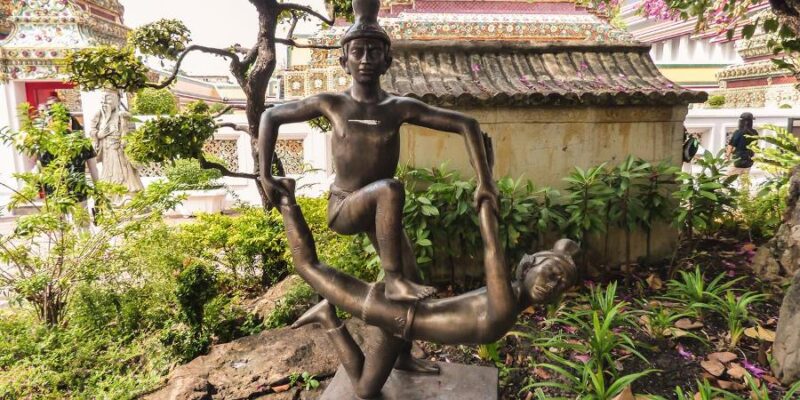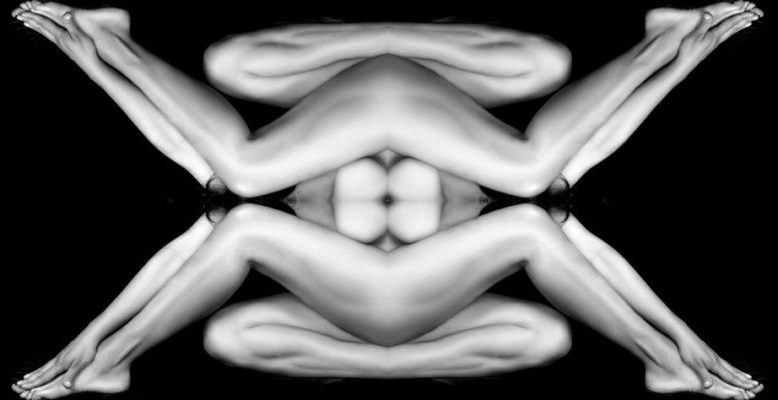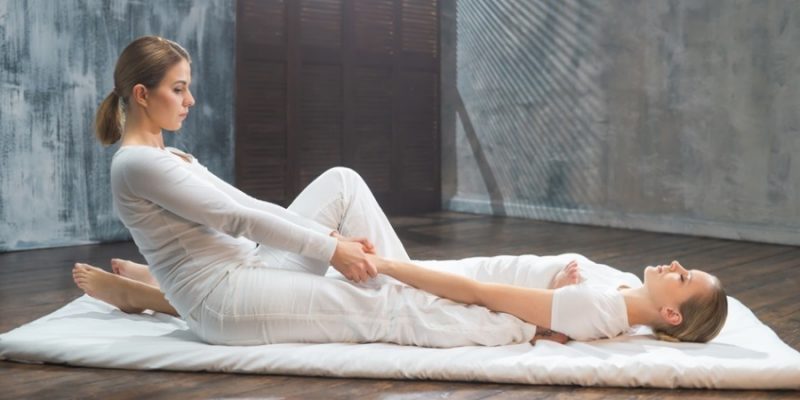
In this post, we discuss in what circumstances and with what Thai Massage techniques and treatments one can alleviate or even cure knee pains.
Knee pain is a rather common ailment and can have many causes, which include injuries (such as ruptured ligaments, bone fractures, and torn cartilage), overuse (such as repetitive strain or overweight), arthritis, gout, inflammations, and infections, to name the most common issues.
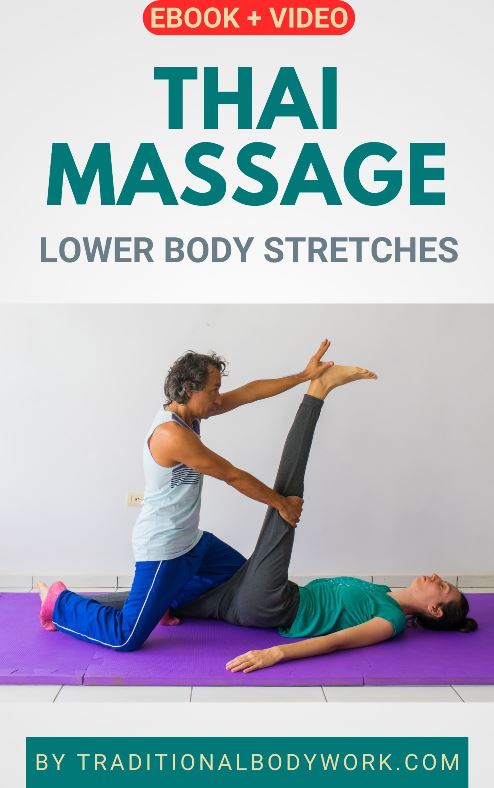
The knee joint problems mentioned above may be resolved by taking plenty of rest (and thus stopping the activity that causes pain), weight loss, medication, surgery, ice packs, or knee braces, among other remedies. Proper assessment and diagnosis by a professional healthcare provider may quickly reveal “what’s wrong,” and subsequently a specific treatment or medication can be prescribed.
Nevertheless, what’s often not addressed in mainstream medicine is that knee pain can be caused by overly tensed, contracted, and shortened muscles or tendons, or even by not using the knees enough. As for the latter, joint use and subsequent movement of the synovial fluid which is in the joint is necessary to keep the knee joints adequately lubricated and healthy.
The main groups of muscles and tendons that extend, flex, and also cross the knee joint are the hamstrings (back thigh muscles that cross the back of the knee), quadriceps (front-thigh muscles that cross the front of the knee), and calf muscles (the gastrocnemius crossing the back of the knee).
If one or more of these muscles are tensed, shortened, or contracted (for instance due to a sedentary life or job, or by contrast — because of too much workout and strain for these muscles) they can cause pulls, compression, and even partial dislocation of the knee joint, which can result not only in restricted movement and range of motion issues but also in pains.
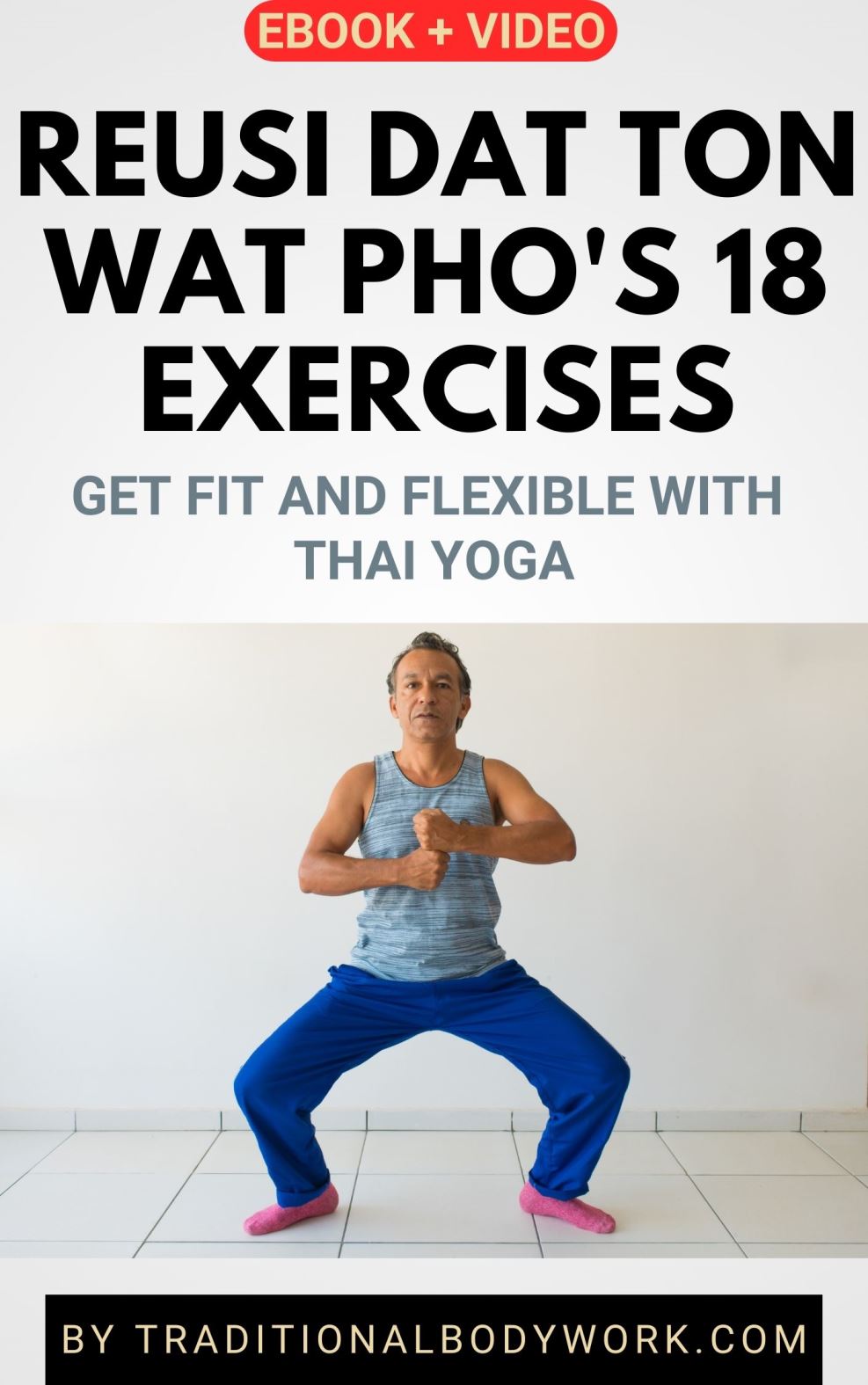
Hence, stretching and massaging these tendons and muscles regularly by applying one or more of the numerous Thai Massage stretching and muscle relaxation techniques for the hamstrings, quadriceps, and calf muscles can give relief or even cure pains. Thai Massage acupressure and Thai Massage Sib Sen Energy Lines work can also be incorporated in sessions as an additional treatment option.
A sedentary lifestyle (or work that’s done mostly seated) can be a cause of too little use of the knee joint. In this case, one can enter the “if you don’t use it, you lose it” scenario, which can result in “rusted knees” inhibiting proper circulation of blood, lymph, and lubricative fluids. This finally can also cause knee pain. In addition, by not using the knees enough, the muscles, tendons and ligaments that support the knee joints become weaker, which can become a cause for injuries and overstrain of the knees.
At any rate, Thai Massage boasts a broad range of joint mobilization techniques, which can make sure to give the knees plenty of appropriate motion and movement and combat knee stiffness. Of course, another more structural solution would be to change one’s lifestyle and start to using the knees (and the muscles and tendons around it) more. The latter can be done by specific knee exercises (squats, half-kneeling hip flexor stretches, heel raises, etc.), but also by engaging in more regular outdoor physical exercise such as walking, hiking, climbing, and so on.

Another important thing to tackle knee pain is to look at it from out a compensation point of view. This is the domain of holistic client assessment, which takes into account other, less obvious factors that may play a role in causing certain pains, discomforts, or health issues.
For instance, pain in the left knee is perhaps caused by an old injury of the right ankle. This may sound strange, but at the time of the injury of the right ankle a person may have started to lean more on the left leg (and left knee) to avoid pain of the right ankle. This in turn may have become a habit, which continued even after the right ankle healed, finally becoming the cause of overuse and pain.
If these types of body symmetry and postural issues can have caused knee pain is typically the domain of holistic postural assessment and holistic compensation assessment.



